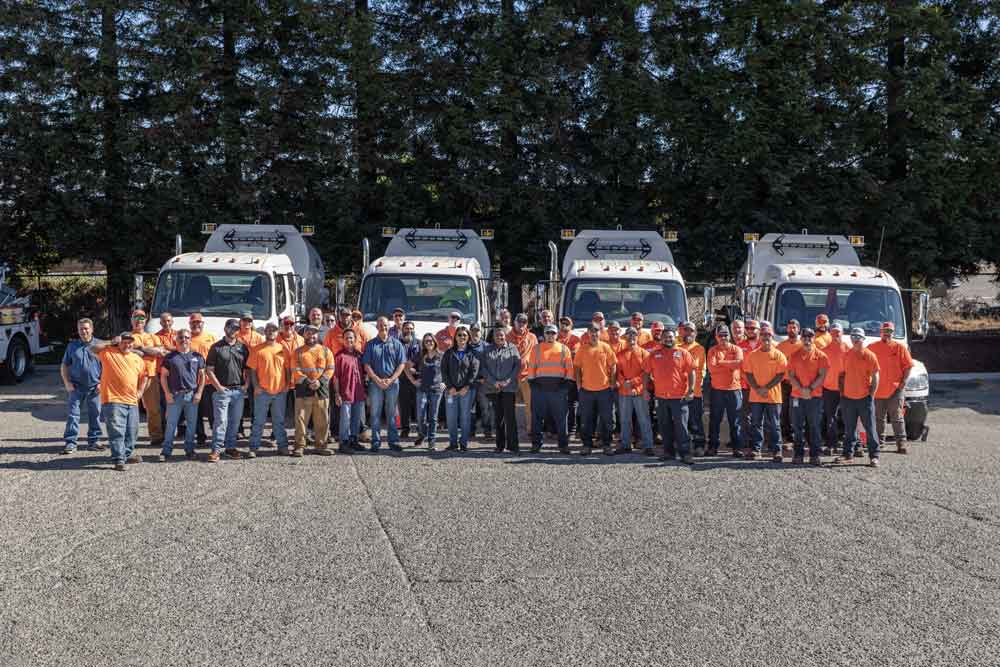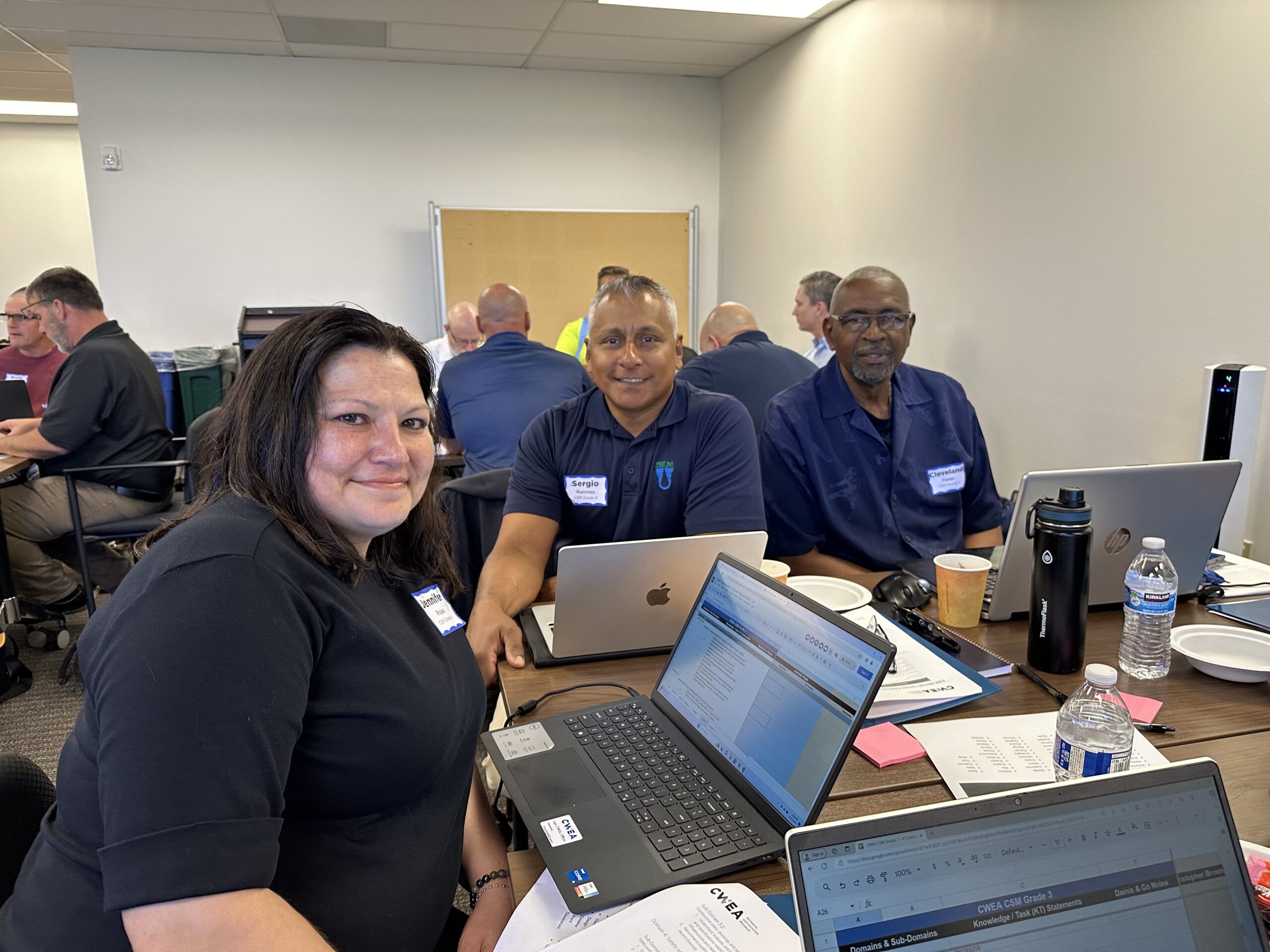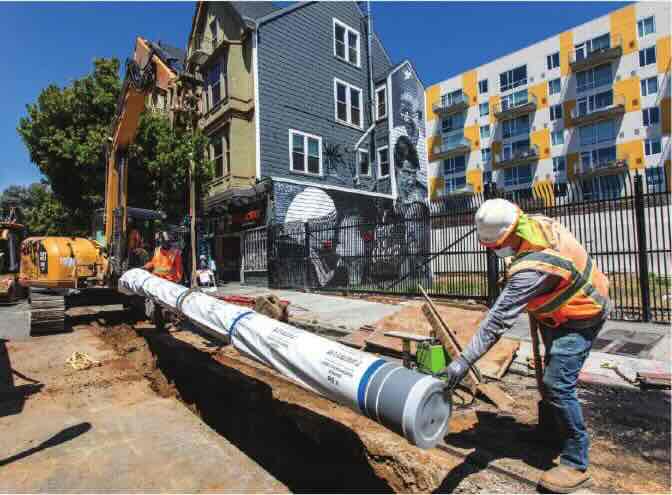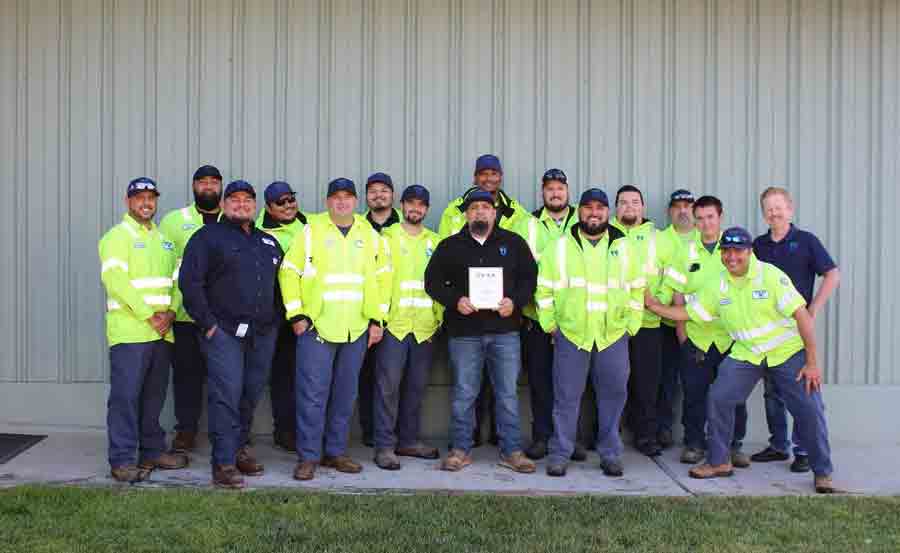
Central San Collections Team Photo by Joe Zumbo
Central San takes home CWEA’s Collections System Award
By Jim Force, correspondent , Collection Systems
The Central Contra Costa Sanitary District (Central San) Collection System Operations Division in Walnut Creek is renowned for preventing sewer spills. Achieving that goal, as well as other accomplishments, earned Central San the 2025 Collection System Award, presented recently at AC25 in Palm Springs last month.
“We have a great staff,” says Paul Seitz, manager of the Collection System Operations Division. “And we’re staffed well. We couldn’t have won this award without everyone’s professionalism and hard work.”
Each year, Central San processes over 13 billion gallons of wastewater. Its service reaches nearly half a million residents and more than 15,000 businesses spanning 3,000 parcels. The District’s service area includes seven cities, as well as portions of two additional cities and unincorporated communities in central Contra Costa County.
Its sewer system stretches more than 1,540 miles throughout a service area that measures 145 square miles. The system contains 22 force mains, several underground siphons, and 18 pumping stations. Pipes range from six to 102 inches in diameter and include clay, reinforced concrete, and PVC. A small amount of steel pipe is used for the siphons and creek crossings. The oldest clay pipe dates to 1913, with the rest of the system averaging 50-55 years in age.
“Still plenty of life yet,” Seitz observes.
To prevent spills, the Central San Collections team practices a rigorous cleaning and maintenance routine and maintains a 24-hour emergency dispatch service. The District uses a Cityworks PM program.
“We clean an average of 750 miles a year,” says Seitz, adding lines are cleaned whether they have had a stoppage or not.
He reports the District uses hydraulic rodders primarily for roots that intrude through cracks and joints in the clay pipe and has three small Vactor jetters and three larger Vactor vacuum-jetter trucks that clear grease and debris from the larger pipes in the system. The Collection team has 13 trucks in total.
“We CCTV about 10 percent of our smaller pipes each year,” he adds.
An outside contractor inspects larger pipes using multi-sensor inspection, which can assess wall diameter, corrosion, the presence of H2S, and other parameters. As a result, the number of spills is decreasing, year by year.
Accessibility is another challenge. Seitz says between 450 and 475 miles of the district’s sewers are in easements—customer’s private property and other tight spaces.
“These are tougher to maintain,” says Seitz, “but we know how to do it.”
The dispatch call center phone line is available nonstop for customers to call in about issues or backups. Seitz says the response time is 30 minutes or less during normal working hours and 40 minutes during off hours. The call center is staffed live (no voice mail) 24-7-365.
The Central San Collection group includes eight people on the pumping station team and about 50 crew including four supervisors and a superintendent in the field group.
“We work a standard shift, 6 a.m. to 2:30 p.m. After 2:30, we have an on-call crew and supervisor available to respond to concerns or issues,” says Seitz. “We’re available to the public at all times.”
The budget for sewer operations, maintenance, and labor is approximately $18 million per year. Additionally, the current annual capital budget is about $30 million for sewer and pumping station projects.
Seitz explained that the District is installing two new major pumping stations adjacent to existing ones, which will feature modern pumps and other amenities. Two new sewer projects include 1.8 miles of open-cut and pipe-bursting sewer replacement in the city of Lafayette, as well as a sewer renovation project in Pleasant Hill, which is also a 1.8-mile replacement project.
Another major project is a reassessment of all large-diameter siphons and force mains. The District is just completing year one of that effort. “We have several creeks in the area,” explains Seitz. “We prefer to run siphons under creeks rather than aerial crossings over them.”
Seitz says that in addition to the challenges of the new construction projects and those associated with new government regulations, staffing will be the District’s biggest issue.
“It’s the ‘silver tsunami,’” he notes. “We’ll have to hire and train new people to replace those who are retiring.”




